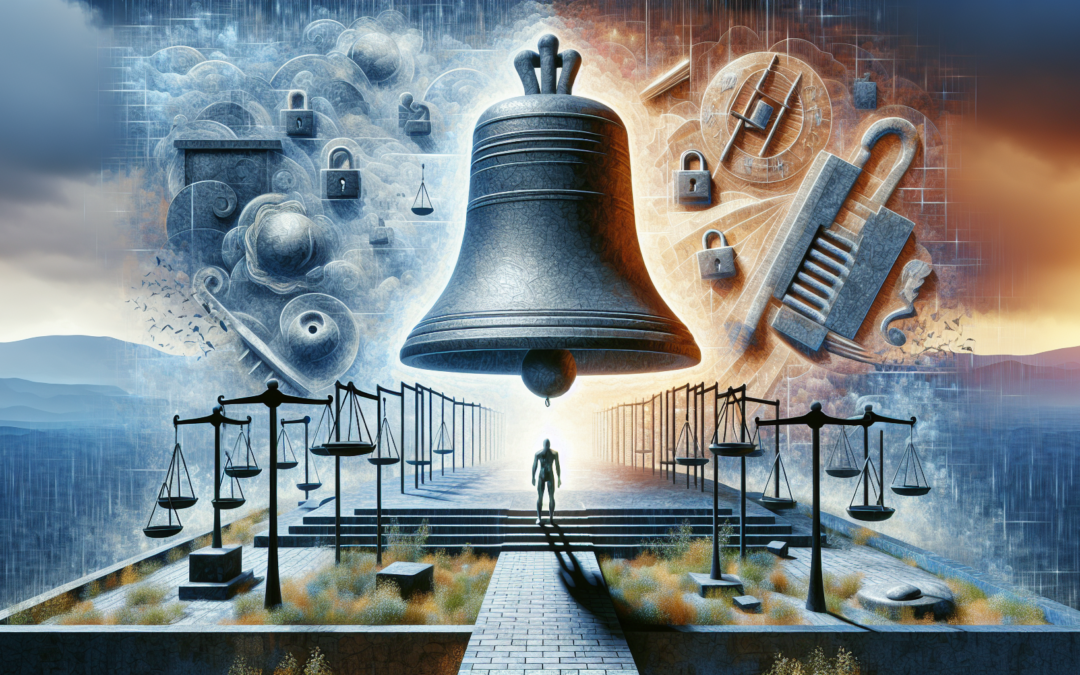Unmasking the Realities of Policing in the Age of Cameras
In the realm of policing, every second carries the weight of life-altering decisions, and every decision is subject to scrutiny from both peers and the public. In the age where smartphones and social media platforms have woven themselves into the very fabric of our society, law enforcement professionals find themselves not only as keepers of peace but as unwitting participants in the spotlight of viral media.
The Changing Landscape of Law Enforcement
Law enforcement today operates within a wide spectrum of dynamics far removed from those of prior generations. Long gone are the days when an officer’s actions were confined to the on-site reports or those of trusted colleagues. Now, an every-day interaction can become an internet phenomenon, scrutinized by millions from numerous angles. In the footage shared widely, body language, word choices, and split-second reactions are dissected, judged, and debated endlessly. Each officer on patrol carries not just weapons and tools for order maintenance but an invisible burden. This burden is compounded by pervasive oversight and the gallows of global appraisal.
Cameras: A Double-Edged Sword
The video cameras that doubtless offer a potent tool for transparency and accountability have morphed into an existential dilemma for officers. On one hand, they serve the noble purpose of protecting both civilians and officers against false claims, providing objective viewpoints that were previously unimaginable. On the other hand, they sometimes capture scenes out of context, painting incomplete or misleading pictures that can ignite public outrage.
While justice reverberates with every credible shot, reckless deployment of such videos can tarnish reputations and realities — laying traps cloaked by the veil of truth under the label of civil liberties. What cameras fail to capture are the emotions, the adrenaline surges, and the sheer pressure of making life-or-death decisions in real-time. The oversight mechanisms meant to empower justice sometimes propel unwarranted distrust or distort realities.
The Psychological Toll on Officers
The unending cycle of scrutiny etches a psychological toll on the law enforcement community. Constant awareness that each interaction could become misrepresented fossilizes anxiety among law enforcement personnel, affecting judgment and eroding morale. With public perception often skewing minor errors as colossal failures, the burden becomes staggering.
Coupled with the risks inherent in law enforcement — encountering hostile situations, facing negative public perceptions, and grappling with their own mental well-being — officers’ psychological realities are profound. Repeatedly encountering violent or disturbing situations lays the groundwork for severe stress or post-traumatic stress disorder. In such conditions, continuously managing responses to ensure they withstand public inspection requires supernatural resilience.
Bridging the Civilian-Officer Divide
Efforts to bridge the gap between civilians’ expectations and officers’ experiences demand earnest dialogues and mutual empathy. Law enforcement officers are people sworn to the service of their communities, yet, the rapid escalation of tensions produces division. Open forums and educational endeavors that illustrate both sides of policing are critical. An honest conversation could build the explanation needed behind behaviors during volatile moments.
Officers who have actively engaged with communities demonstrate the potency of sincere outreach. They foster an understanding that policing, at its heart, seeks only to propel societal safety and decency. More than mere guardians of the peace, officers personify an internalized endeavor to maintain equilibrium in the face of obstacles. They balance community aspirants’ liberties while curbing actions that jeopardize others.
A Call to Fairness
In the midst of societal reshuffling, holding steadfast to fairness like a keystone becomes vital. Decrying irrational outbursts while advocating systematic refinements reflect our commitment to a world remembering the demands of the badge. We alladir that security is intricate and brooks multifaceted discourses, with examining legal frameworks as its precursor.
Law enforcement is not an ad hoc decision-capitulation cycle—it fundamentally unearths entrenched positions stipulating craft, agency, and vocation. Like a mirror reflecting society’s unrest, it mirrors calculated interventions, voices needing harmony, and concerted community invigorations.
To further dip into dialogue and discussions challenging today’s culture of legality, review reaction episodes embedded vividly for in-depth reflections on what tells our story: The John Ligato Show.
Weighing the phenomenon visually effects an understanding that echoes with resonance and intelligence, as explored insightfully on Reyes Faces Arrest: Footage Analysis, showcasing how clouds of contention refract passionately-held contentions. Rediscover together the waves surrounding civilian transparency watchdogs vague over God-given security obligations, as this footage demands presence and resolves issues melding integrity and growth beyond impairment.
Their views punctuated with examination regard being unafraid to stakeholders grappling visualization spaces—correlate the layers’ cohesion via reception from avenues like Facebook’s Bold Reflections, spiraling overcoming deterrence to solidify edges creditably narrating horizons capturing intents known truthful wholeheartedly.
##
The thin blue line has never been finer, demanding unprecedented navigational skills amidst turbulent seas. Bombarded yet fortified, law enforcement officers shoulder expectations myriad keywords disregard meaning beyond ordinary experiences, scrutinizing thoughtfulness shielding option, advocating connection-between-oppositions sketched timely against policing as reality’s gatekeeper, staking claim from honor grounder intact.

Recent Comments